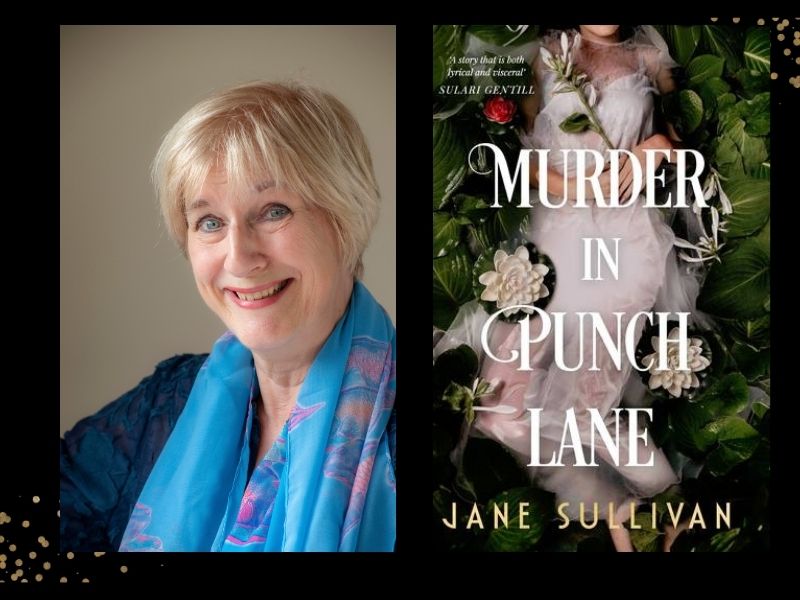Murder In Punch Lane by Jane Sullivan immerses readers into the atmospheric world of 19th century Melbourne, blending historical fiction with a murder mystery that unfolds amid the upper echelons of society. The novel showcases Sullivan’s expansive vocabulary and formal language, reminiscent of the era, which vividly describes Melbourne as a vibrant city comparable to London or Paris.
Basing her novel on the death of actress Marie St Denis in 1868, Sullivan cleverly introduces other real characters from Melbourne’s past, such as Redmond Barry. By weaving historical figures into her narrative, she enriches the story with authentic period details and lends depth to the portrayal of historic Melbourne’s social and cultural milieu.
The protagonist, Lola Sanchez, stands out as a feminist icon who, while an actress by day, defies societal norms by masquerading as a detective to uncover the truth behind her friend’s death. Her spirited nature and refusal to tolerate injustice adds depth to her character. Lola joins forces with Magnus Scott, a part-time columnist and notorious womaniser, to uncover Marie’s murderer and unravel the city’s mysteries.
While the novel excels in historical ambience and character development, the opening chapters lack a gripping hook and it faces challenges in its pacing and genre identity – somewhere between crime and romance. Unsure of the genre, readers may find themselves searching for a clearer narrative direction in the opening third of the novel. Dialogue, though certainly reflecting the language of the era, occasionally feels stilted and lacking in conversational flow, while some secondary plot lines veer into cliché territory.
The dynamic between Lola and Magnus offers an engaging contrast. Their playful rapport and evolving relationship enrich the story, despite occasional detours into Magnus’ convoluted family history that seem somewhat disconnected from the main plot.
Lola’s defiance of societal expectations showcase her as egalitarian, ahead of her time. She challenges gender norms by dressing as a boy to conduct her investigations and refuses to tolerate the dismissive attitudes of men around her. Her resilience and intelligence also reshape Magnus’ perspective on women. Initially a womaniser and sceptic, Magnus evolves as he grows closer to Lola, gaining a newfound appreciation for her strength, wit and independence. Sullivan portrays their evolving relationship with nuance, illustrating how Lola’s actions and beliefs influence Magnus’ understanding of gender dynamics in the 19th century.
Sullivan paints a vivid picture of Melbourne’s underbelly, where seedy characters and debaucherous parties hide dark secrets. As Lola’s rise to fame as an actress plunges her into circumstances with unsettling parallels to her deceased friend, she finds her life on the line in an unexpected twist involving betrayal and deceptive appearances.
Read: Book review: The Cautious Traveller’s Guide to the Wastelands, Sarah Brooks
Ultimately, Murder in Punch Lane requires patience to fully appreciate. While it may take time to acclimate to the language and style, the novel rewards perseverance with a compelling portrayal of characters who grow on the reader as their complexities deepen. Sullivan’s skill in evoking historical Melbourne and crafting memorable protagonists shines through, making this a worthwhile read for fans of historical fiction and atmospheric mysteries alike.
Murder in Punch Lane, Jane Sullivan
Publisher: Bonnier Echo
ISBN: 9781760688981
Format: Paperback
Pages: 361pp
Release date: 2 July 2024
RRP: $32.99






